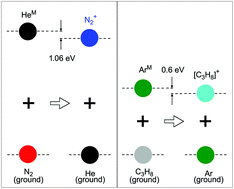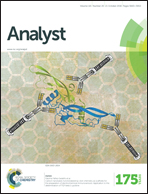An experimental study on the influence of trace impurities on ionization of atmospheric noble gas dielectric barrier discharges†
Abstract
While the influence of trace impurities in noble gas discharges is well established in theoretical work, experimental approaches are difficult. Particularly the effects of trace concentrations of N2 on He discharges are complicated to investigate due to the fact that for He 5.0 the purity of He is only 99.999%. This corresponds to a residual concentration of 10 ppm, thereof 3 ppm of N2, in He. Matters are made difficult by the fact that He DBD plasmajets are normally operated under an ambient atmosphere, which has a high abundance of N2. This work tackles these problems from two sides. The first approach is to operate a DBD plasmajet under a quasi-controlled He atmosphere, therefore diminishing the effect of atmospheric N2 and making a defined contamination with N2 possible. The second approach is using Ar as the operating gas and introducing propane (C3H8) as a suitable substitute impurity like N2 in He. As will be shown both discharges in either He or Ar, with their respective impurity show the same qualitative behaviour.

- This article is part of the themed collection: Analyst Recent Open Access Articles


 Please wait while we load your content...
Please wait while we load your content...